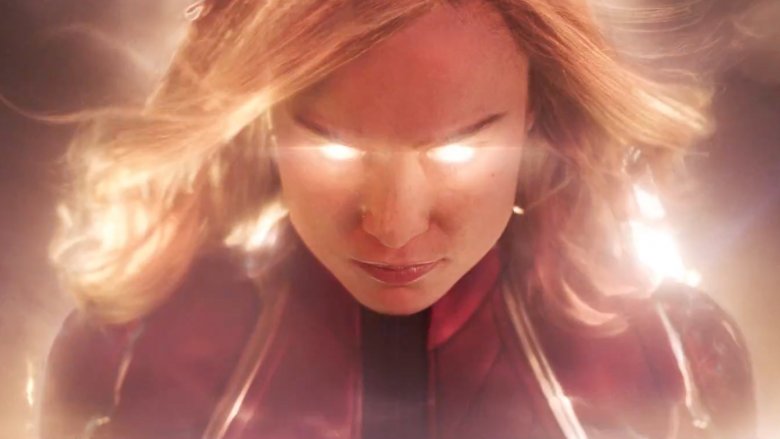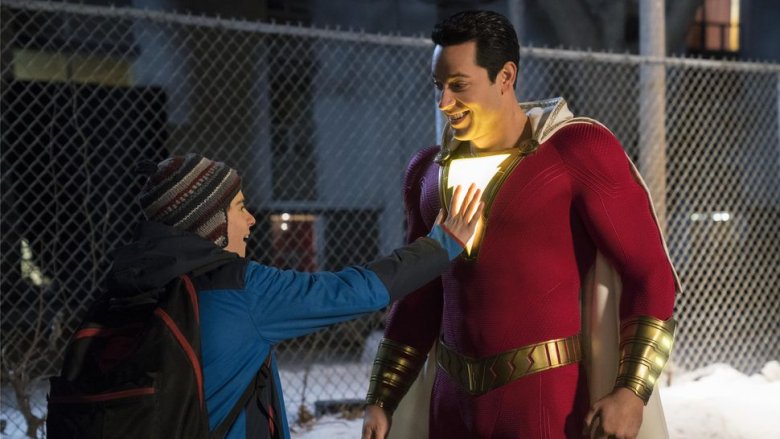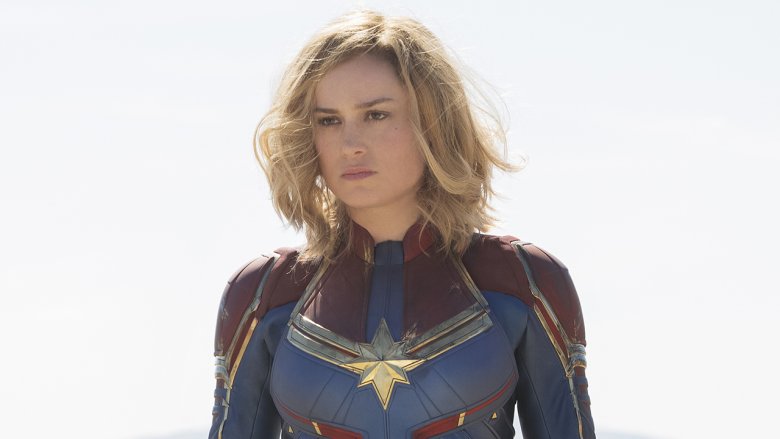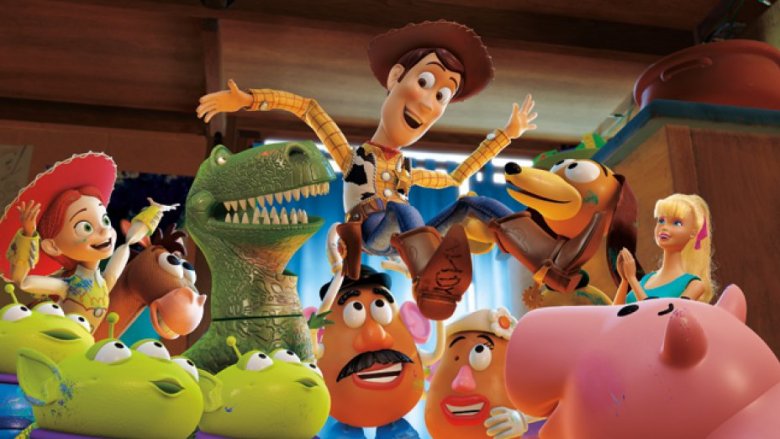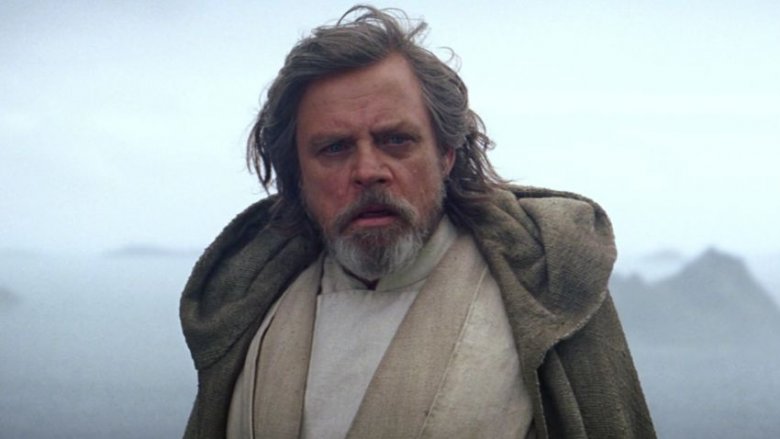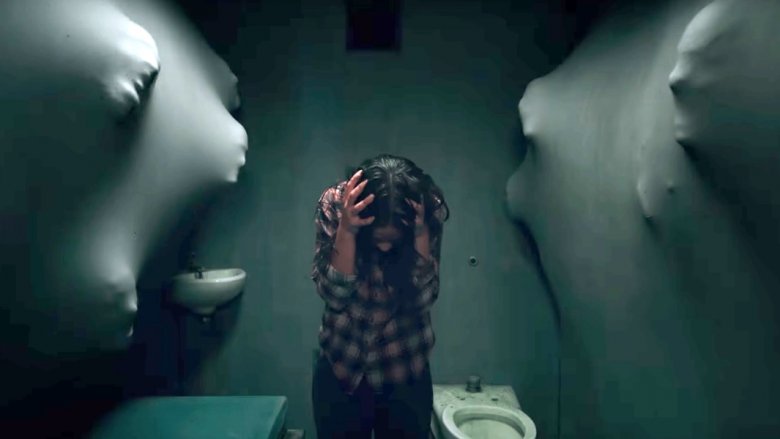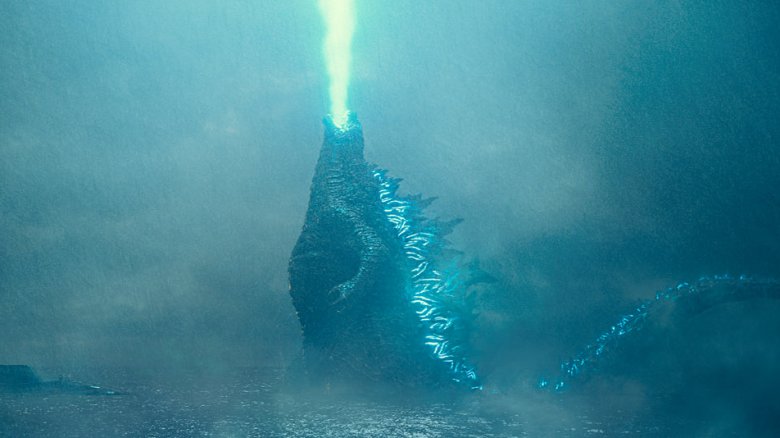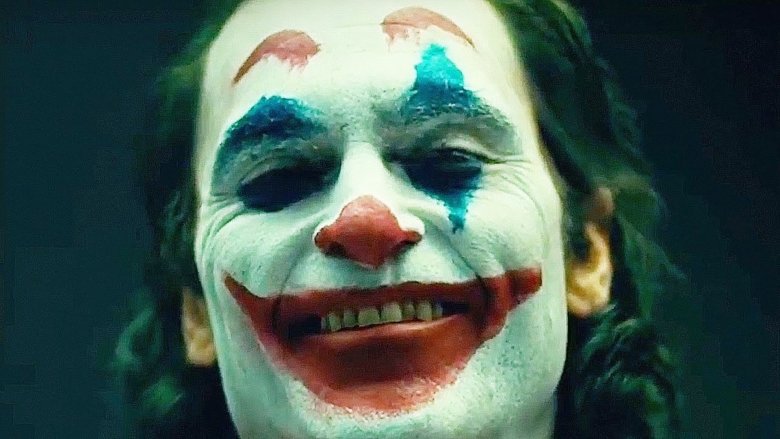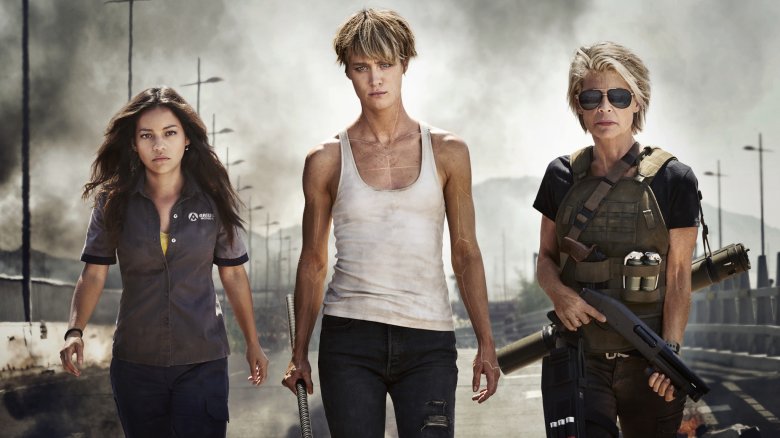The Biggest Movies With Something To Prove In 2019
2019 is shaping up to be a massive year for blockbusters, with many high-stakes, big-budget flicks set to hit cinemas worldwide. Included in the upcoming roster are monster movies, animated adventures, and of course, a heck of a lot of superhero fare. But for all their artistic differences, these films share one thing in common: they're all carrying the full weight of Hollywood on their shoulders. Entire franchises hang in the balance with some of these upcoming movies, the reception of which will determine the fates of studio projects for years to come. Will the Worlds of DC's first comedy be a course-corrector for the faltering franchise? Can a certain blue hedgehog win over filmgoers like he has video game fans? Can Disney restore balance to the Force? All of these high-stakes, billion-dollar questions and more are set to be answered in the coming months — but it's never too early to start getting excited for the box office magic to begin, so let's take a look at the biggest movies with something to prove in 2019.
Avengers 4
Avengers 4 has just about everything to prove, and that's not hyperbole. First and foremost, it has to provide a satisfying conclusion to one of the most jarring cinematic cliffhangers of all time. Effectively undoing "the snap" in a way that will please hundreds of millions of fans is no small undertaking, after all. The film also has studio pressure to outperform Avengers: Infinity War, the culmination of a decade's worth of storytelling and the proud owner of a $2 billion haul at the box office. Who knows what Marvel will do get more butts in seats than they did for Infinity War, but what's for certain is that the marketing team for Avengers 4 has a mountain of expectations to climb.
And, of course, this movie is going to pave the way for the rest of the MCU moving forward. In that sense, Disney has tens of billions of dollars riding on its success. Will Kevin Feige's massive, property-spanning vision pan out according to plan? Can Disney outdo its previous box office behemoth? Will Avengers 4 be a satisfying finale to Infinity War?
Shazam
The DCEU has had an uneven go of it thus far, but a turnaround could be just over the horizon. After the Jason Momoa-led Aquaman, the studio has Shazam coming out, and hoo boy, does it look like a gem. Its trailer's humor is smart, wacky, and just a little bit tacky — the perfect blend for a memorable comedy. Its tone appears to be consistent and, based off of what we've seen, the people behind the movie seem committed to making this a light, fun superhero adventure with a real soul.
Shazam's trailer shows off a handful of heartfelt moments that touch on the intersection between superheroics and physical disabilities. And while brotherly friendship might be the heart that underpins the story, we've also seen that Shazam cares just as much about making viewers laugh as it does about telling a meaningful story. All the actors seem invested in their roles, the direction looks superb — all around, Shazam looks like the movie that might just see DC superhero cinema starting to gain some ground on the MCU. Fingers crossed!
Captain Marvel
Captain Marvel is Marvel's big shot at showing it can match DC's Wonder Woman. If the studio fails, it'll be tough for the studio to come back from — they're planning to make this character the center of the MCU, after all.
That's an awful lot of responsibility for a hero who's never been mentioned by name in the franchise thus far, and although they've certainly got star power in the title role — Brie Larson took home an Oscar for her work in Room not that long ago — it isn't unreasonable to argue that Captain Marvel is, in its own way, just as big a gamble as Avengers 4. Marvel's made billions at the box office with gambles that occasionally seemed outlandish at the time, but this picture is a cornerstone of the post-Infinity War MCU, and it's bearing more weight than most of the studio's releases. We've learned not to bet against the company that made movie stars out of a foul-mouthed raccoon and a tree-shaped alien, but still — if Captain Marvel tumbles, it could have a major ripple effect on everything that follows.
Toy Story 4
Toy Story 4 might just be the biggest risk Pixar has ever taken. The formerly sequel-averse studio has expanded a number of its hits into franchises, but going beyond a trilogy — and with the series that started filmgoers' love affair with Pixar in the first place — has a lot of potential downside. Unless this long-gestating fourth installment can somehow bring back the old crew in a way that makes sense and is justified beyond all doubt, Toy Story 4 will be seen as a cash grab from a studio that made its sterling reputation by conditioning its audience to expect much more. No one wants Pixar to dip back into the well solely to make money off Woody's and Buzz Lightyear's iconic mugs. The Toy Story trilogy has defined many peoples' childhoods — and many adulthoods as well. Grown men wept in theaters because of Toy Story 3. No one wants that sort of cinematic magic to be retroactively undone by a corporate quest for bigger bucks. Luckily, if Tim Allen has anything to say about it, it looks like we're in for a worthy fourth installment.
Star Wars: Episode 9
Disney tapped a box office bonanza when it bought Lucasfilm from Star Wars creator George Lucas, but it also shouldered the weight of some of the heaviest expectations any franchise has ever faced. For the most part, things have gone pretty well — The Force Awakens started a new trilogy in style, and the first "anthology" effort, Rogue One, proved these movies could work just as well on a smaller scale by delving into unexplored corners of the canon.
It would be disingenuous to ignore the ups and downs the studio's also faced along the way, however. The Last Jedi was a critical hit that brought in an impressive sum, but it was also infamously divisive among fans; just a few months later, the anthology outing Solo: A Star Wars Story emerged from a troubled production to lukewarm reviews and disappointing ticket sales.
All of which is to say that with the still publicly untitled Episode IX, the franchise — and director J.J. Abrams, returning after taking a one-chapter hiatus following The Force Awakens — faces a ton of responsibility. Not only will the pundits be waiting to see whether this chapter can reunite the fanbase, it also has to tie up the Skywalker saga and pave the way for the next trilogy to follow. If it stumbles, the future of this once unstoppable series will no doubt be called into question.
Sonic the Hedgehog
For non-gamers, here's the skinny: Sonic's a blue hedgehog who runs at the speed of sound through exotic locations while battling an evil doctor who wants to take over the world with robots. This basic setup has allowed for Sonic's games to be some of the most visually imaginative, zany, and high-octane in the entire medium.
How this all translates into an effective live-action movie has yet to be seen. However, the 2019 Sonic movie's earliest breadcrumbs of news aren't terribly promising. Without even speculating about whether this movie will "look" right from an artistic, aesthetic standpoint, we can already justify some skepticism just by perusing the cast and crew. This movie marks the feature film debut of director Jeff Fowler, who only has a single animated short under his belt. And the cast is relatively B-and-C-tier, with the exception of Jim Carrey.
Even Sonic's own game creators don't always do him justice — and if it's that hard for seasoned professionals to make a game out of a game character, who knows how well a rookie director will fare. Hopefully Sonic can defy expectations; if not, this could be the first and last shot he gets at a live-action movie, and another sign to studios that video game adaptations are almost impossible to pull off.
The New Mutants
The New Mutants has a couple of things to prove, including the studio's assurances that it'll eventually come out. It's suffered repeated delays and various troubling rumors — and if or when it does arrive, everyone will be trying to spot the seams while deciding whether the end result lives up to what's being billed as a superhero horror film.
We've already seen the genre prove it can pull off comedy, thanks to Deadpool and Guardians of the Galaxy, but we've yet to see a superhero movie go full-on horror. Rumor has it that New Mutants is eyeballing R-rated territory, and if this ends up being the case, it'll be a crucial test for just how far filmmakers are able to push the limits of moves about our favorite costumed crimefighters. Even if it forgoes an R rating, that just makes its job of delivering effective horror even harder. Can this be another X-Men spinoff to nail a new genre hybrid concept, or is this destined to be nothing more than millions of dollars being funneled down the drain?
Godzilla: King of the Monsters
If there's one thing that divided fans with 2014's Godzilla, one thing this sequel needs to get right, it's the amount of screentime the movie's titular character receives. Last time, Godzilla had a glorified eight-minute cameo in his own picture. That's not how it should be.
Will Godzilla: King of the Monsters repeat the last movie's mistake of spending more time on the "enemy" kaiju and boring humans instead of on its badass, jumbo-size lizard protagonist? Who knows. King of the Monsters' trailer shows new human characters, a ton of cool, classic kaiju that'll likely steal lots of screentime, and a general lack of the big guy himself, outside of a few choice shots. Hopefully this trailer was edited just to set up the movie's premise and stakes, and the full film will feature a much better ratio of Godzilla-to-everything-else. We'll see, though; maybe the filmmakers are hellbent on the "less is more" mentality. And maybe they can even make that work this time around — they'll have to, if they want to effectively ramp up anticipation for the upcoming Godzilla vs. Kong picture due to arrive in 2020.
The Joker
As a result of DC's and Warner Bros.' continued scramble to find a cinematic approach that works, they've called upon Joaquin Phoenix to reimagine DC's greatest villain. Is it a gamble, casting him in a movie entirely about the clown prince of crime that's being directed by the guy who helmed three very hit-or-miss drunken roadtrip comedies? Maybe. But it's one WB and DC are okay with making, after having tried the traditional route with Batman v Superman, Suicide Squad, and Justice League.
Still, even though it's good to see studios taking superhero risks, this one is especially high-stakes. It could sink their line of one-off spinoff movies before it even begins. There's the very real risk that people simply won't like this Joker at all, damaging their flagship villain's public image, on top of the damage it'd do to the companies' other fledgling spinoff plans. This all assumes they don't just cop out with another thinly veiled antihero movie, à la Suicide Squad. Doing this movie right is going to be like navigating a minefield, and one bomb could be fatal.
Terminator 6
The Terminator movies haven't been doing well for quite some time. The series' reputation has been in decline with every movie after Terminator 2, and it hit a new nadir with Terminator: Genisys. Fans of the classic movies have decried these not-so-hot sequels quite vocally, though the recent outings' woeful box office hauls probably spoke even louder to the studio execs in charge. Between critical discontent and disappointing financial figures, the Terminator franchise hangs in the balance. Can the creative team currently at the reins make it work, or is the series destined to remain an icon of the '80s?
That's the question dangling over the upcoming Terminator outing, which has been saddled with the responsibility of saving the franchise from itself. That's not an easy cross to bear — especially when you consider the torturously tangled timeline that's been woven around this saga over the last few sequels and/or reboot attempts. Hopefully the trailers — and the movie itself, when it eventually comes out — represent a solid rebound and provide us with an action blockbuster that saves its franchise from extinction.
